Renter-occupancy in the Southeast Michigan makes up only about a quarter of the region’s housing tenure rates, according to the 2013 American Survey. The majority of municipalities in the region had fewer than 20 percent of residents residing in a rental property. However, there were several cities near Detroit with renter occupancy rates above 35 percent. Washtenaw County had the highest overall renter occupancy rate at 39.2 percent probably because of the number of students attending universities there; Wayne County came in second to that at 35.2 percent.
As defined by the American Community Survey, residency is defined as where an individual was staying at the time of the survey, so long as they were, or intended to be there, for two months or longer.
According to the Joint Center for Housing Studies of Harvard University (JCHS) renting has been an increasing nationally. For example, in 2013 about 43 million households (or more than 35 percent of the all U.S. households) rented rather than owned a home. JCHS attributed the changing homeownership rates largely to the Great Recession. JCHS suggested that following 2008, homeownership was perceived as more risky as people witnessed the large wave of foreclosures that occurred, the drop in home values, and the costs of relocating in order to find better and more stable employment. The freedom renting provides, particularly for millennials, was noted as another reason why the rental market is growing. For these reasons, as well as the expected increase of immigrants coming to the U.S., over the next 10 years, JCHS predicted that the number of renter households will increase by up to 4.7 million by 2023.
Although renting is growing nationally, the JCHS states that rates are higher in central cities where land prices are high and r pool is made up of those whose incomes are below $30,000. In terms of age, the JCHS said low income housing is centralized. The Joint Center said more millennials tend to rent compared to older generations, such as the baby boomers.
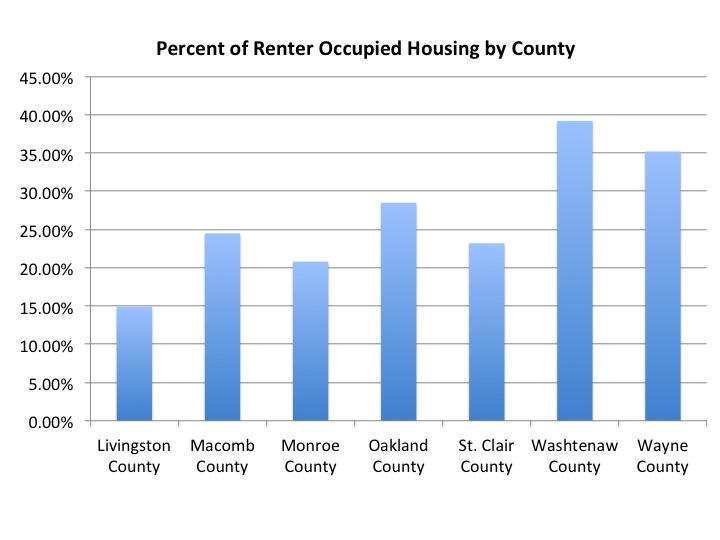
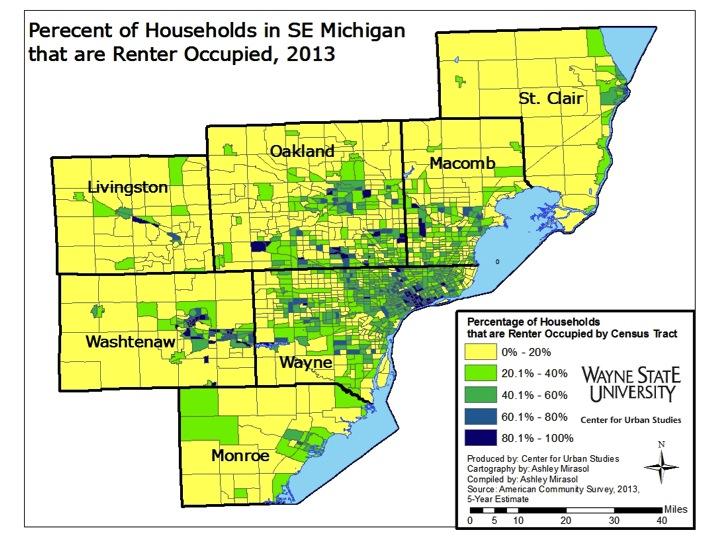
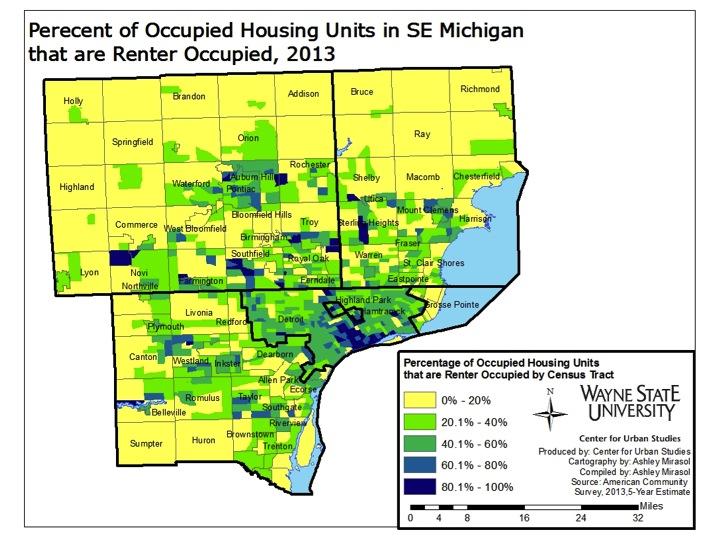
In the seven counties of Southeastern Michigan, 26.6 percent of households were renter occupied in 2013. Among municipalities, Detroit was a hub for rental occupancy in the region: 48.1% of households being renter occupied. There were also pockets of high rental residency outside the city. Many of those locations border the city of Detroit. For example, Ferndale had a renter occupancy rate of 37.9 percent, Hazel Park’s rate was 40.9 percent, and the city of River Rouge’s was 43.5 percent.
Pontiac, the county seat of Oakland County, had a renter occupancy rate of 51.0 percent, a rate higher than Detroit’s. As noted earlier, millennials and those with incomes below $30,000 a year are more likely to rent. The median age in Pontiac in 2013 was 33.5 years and the median household income was $27,528.
The city of Ann Arbor’s renter occupancy rate was 54.3 percent, also above Detroit’s rate. While Ann Arbor’s median income in 2013 was $55,003, it is home to the University of Michigan, which has a student population of about 43,000. A median age of 27.5 and the large student population better explains the high rental occupancy rate there.
Other pockets of high rental occupancy rates were along the I-275 corridor, near Port Huron in St. Clair County and along Lake Erie and the western border of Monroe County.
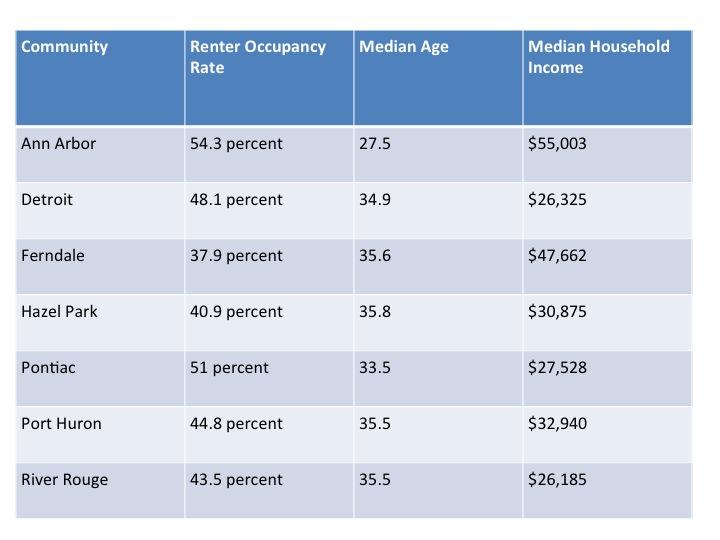
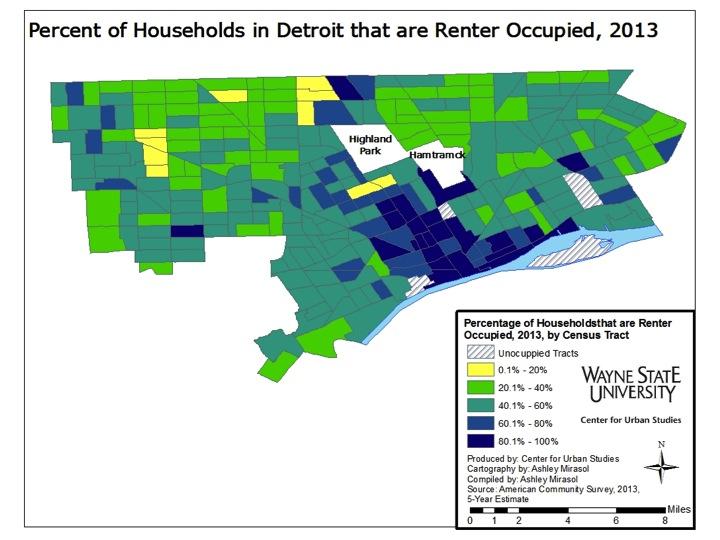
The city of Detroit had one of the highest rates of renter occupied households in the seven county region at 48.1 percent. There were only eight census tracts in the city where 20 percent or fewer of the homes were not renter occupied. The areas in the city with the highest renter occupied rate were the downtown area, Midtown (where Wayne State University is located), and the Jefferson East area. Additionally, the median income in Detroit was $26,325 in 2013 and the median age was 34.9.
As one of the many efforts to revitalize Detroit, companies and organizations such as Wayne State University, the Detroit Medical Center, Henry Ford Health Systems and Quicken Loans have offered employees monetary incentives to live in the city of Detroit. These incentives are offered through the Live Midtown and the Detroit Live Downtown programs and could also be seen as a reason why the rental rate is what it is in Detroit. In addition to city’s median income and age showing a link to the JCHS’ explanation for high rental rates, we also know that certain areas in Detroit (such as Midtown and Downtown) are becoming more attractive to people because of the night life, creative outlets, parks and proximity to sporting and entertainment events.